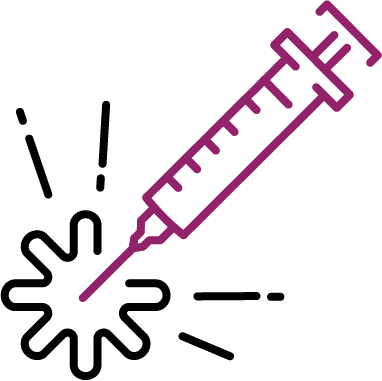National Recovery Month
September 17, 2025
September marks National Recovery Month, bringing attention to individuals in recovery from drug and alcohol misuse, as well as those fighting Substance Use Disorder (SUD) and Opioid Use Disorder (OUD). This observance was established in 1989 by the Substance Abuse and Mental Health Services Administration (SAMHSA), and each year it promotes new drug treatment and recovery practices, as well as highlights the dedicated health care providers and community leaders who support recovery. Whether you are directly affected by substance misuse or not, there are actions you can take and resources you can share to help everyone better understand misuse and recovery.
Reducing Stigma for Substance Use Disorder Patients
People who misuse substances are often stigmatized in their communities. Unfortunately, people with SUD might be mischaracterized as dangerous, incapable of change, or at fault for their disorder. Not only is this shaming to those with SUD, but it can actually worsen their substance misuse or prevent them from seeking treatment for other health issues. SUD and OUD are treatable medical conditions, and reducing stigma can give patients greater access to resources and health care.
To help reduce stigma, you can use and share the following language:
| What NOT To Say | What TO Say |
|---|---|
| Abuser, Addict, Alcoholic | Person suffering from SUD |
| Habit, Abuse | Substance Use Disorder, Misuse |
| Clean, Dirty | Negative/Positive on a drug test |
| Relapse, Former Addict | Recurrence of use, Person in recovery |
Learn more ways to discuss SUD and OUD without stigma from the National Institute on Drug Abuse (NIDA).
Finding Support in Substance Use Disorder Recovery
Finding the right support is crucial to long-term recovery. Types of support for people in recovery can include treatment like cognitive behavioral therapy, residential treatment programs, hospitalization, medications for opioid use disorder (MOUD), telemedicine, and more. Findtreatment.gov is a confidential and anonymous resource to find mental health and substance use treatment. You can also reach out to your doctor or pharmacist for help finding support.
MOUD has been proven to be a very effective treatment for patients in recovery. MOUD treatment has an estimated mortality reduction rate of 50% among people with OUD. There are 3 main medications to treat opioid use disorder (MOUD):
Lifesaving Naloxone
Another medication that is used for patients with OUD is naloxone, often referred to by one of its brand names: Narcan®. Unlike buprenorphine, methadone, or naltrexone, naloxone is not an MOUD, as it is not used for long-term recovery. Instead, it is used specifically to prevent death caused by opioid overdose. Only used in emergencies, naloxone is an opioid agonist, meaning that it blocks opioid receptors in the brain. This lifesaving medicine is available without a prescription, over-the-counter and is often available for free at many community locations like libraries, public health offices, and other nonprofit organizations. It is highly recommended that anyone suffering from OUD and their caretakers have naloxone on hand in case of an emergency. Learn more about administering rescue drugs on our website and watch this video to learn more about administering naloxone.
Wellness Supports Recovery
Physical, social, and emotional wellness support patients in recovery. Caring for physical and emotional health helps improve mood, reduce anxiety and depression, and can lead to better sleep, all of which promotes long-term sobriety. Alongside wellness, many patients in recovery struggle with how to fill their time once their lifestyle has significantly changed. Encouraging people in recovery to discover new hobbies and activities can help reduce stress and build confidence in their newly sober life.
Support those struggling with SUD and OUD in your community and find resources to share on our website.
